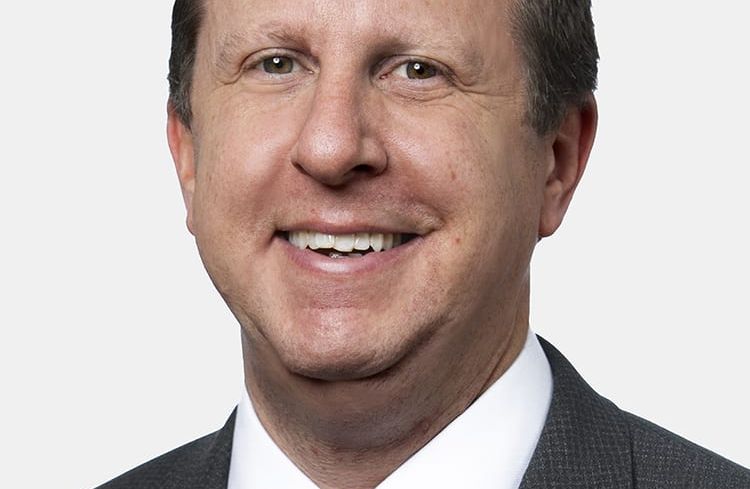Akerman’s Randy Eckers Talks Potential of C-PACE Loans
By Andrew Coen June 21, 2021 10:31 am
reprints
While Commercial Property Assessed Clean Energy (C-PACE) financing has picked up steam across the country, the financing vehicle still has much more room to grow. Still, the sector made headlines this week when New York City’s first C-PACE loan — and the largest C-PACE loan in the green financing source’s history — was made on 111 Wall Street
Randy Eckers, chair of Akerman LLP’s real estate finance group, sees C-PACE loans as an important option for developers, property owners, investors and operators, given the potential for significant cost savings, but noted that a lack of familiarity is holding them back in the marketplace. He’s made it a mission to educate real estate professionals, particularly lenders, about why C-PACE should be given a more serious look.
Eckers spoke with Commercial Observer about the benefits of C-PACE and whether its expansion into New York state will spur momentum across commercial real estate.
Commercial Observer: What are the key advantages for developers and property owners with C-PACE financing?
Randy Eckers: From a developer or property owner standpoint, there are a few significant advantages. Number one, you’d be getting pretty low-cost, fixed-rate financing that has a pretty long term. So, generally speaking, the terms are going to be around 25 to 30 years. It usually matches up with the life of the improvements that are being financed with the C-PACE loan, and the rate is usually 5 or 6 percent, fixed — depending on the asset and market.
Given current market conditions, which property sectors would most benefit from C-PACE loans?
It’s basically great for any property type that is about to start a construction project or a renovation project. Virtually every asset class can use a commercial C-PACE loan, especially in New York City, where we have the Climate Mobilization Act and all these office buildings — and buildings in general — are trying to reduce their carbon emissions pretty significantly over the next few years, and the cost of those improvements will result in lower carbon emissions for each of those properties. Much of it can be financed with a C-PACE loan.
The other type of property that can really benefit from C-PACE now are hospitality assets. If a hospitality asset is in a new default scenario or workout scenario with their senior lender, if they’ve completed improvements in the last three years in a typical look-back period, those costs can be refinanced with the C-PACE loan. The proceeds of that loan could be used, at least in the scenario that I’m talking about, to essentially get that property out of a default scenario with their senior lender.
How has the pandemic impacted the overall C-PACE market?
Strangely enough, I think it’s actually helped it because of the look-back period, and the ability to use C-PACE essentially as rescue capital in replacement of much higher, cost rescue capital.
Where do you see C-PACE volume heading over the next year, now that the economy is opening up more?
We’ve heard from numerous sources that the first New York City C-PACE loan closed a few days ago. I think New York City alone will cause the pace nationally to increase in volume dramatically; and I also think that as New York City assets start using C-PACE, and mortgage lenders get more and more comfortable with it, I really believe that it will spread throughout the country. I think it’s going to see a pretty significant uptick in the next few years as a result.
Your firm was involved in the first C-PACE deal in New York state, that closed in May, for a 65-room luxury boutique hotel in the Hudson Valley. How important was that transaction in terms of opening up the market?
I feel like C-PACE is in its infancy at the moment and I think the real reason for that is, even though it’s approved in 38 states, it’s just not a well-known, non-traditional financing option yet. All the deals that close will eventually result in more and more deals closing in the future.
It’s just a lack of awareness right now; that is the struggle. People don’t know it exists at all. I was just talking to two friends that are New York City real estate brokers yesterday — and they’re on top of everything all the time — and they hadn’t even heard of it. So, there just needs to be an education overall, and every deal that closes, including this one in the Hudson Valley, I think just brings more and more awareness to the product.
What in particular about New York City makes it attractive for some of these deals?
There’s obviously a lot of development and renovation that’s going on in New York City. You can have 20 to 40 percent of your hard and soft costs that are eligible for it, depending on the goal. But, if you don’t comply with the Climate Mobilization Act, you’re going to have significant fines.
What are some steps that you have taken to try to educate real estate professionals more about C-PACE?
I’m sure people are tired of hearing from me at this point. I did a webinar for our hospitality group. We co-hosted it with CastleGreen [Finance] — which is a C-PACE lender — and had a New York state administrator, an engineer that works in the C-PACE space, and we had CBRE on it as well, so it was pretty well attended. The focus was on using C-PACE as rescue capital for hospitality assets.
I was also interviewed on a podcast the other day. I mostly represent lenders, so I talk to them all the time about why this is not as scary as most mortgage lenders think it is. I’ve been talking to brokers, I’ve been talking to the press a bit. I’ve been talking about it non-stop, pretty much. I’m sure everyone, like I said, is tired of hearing it from me.


